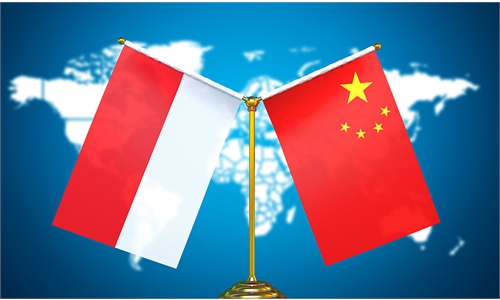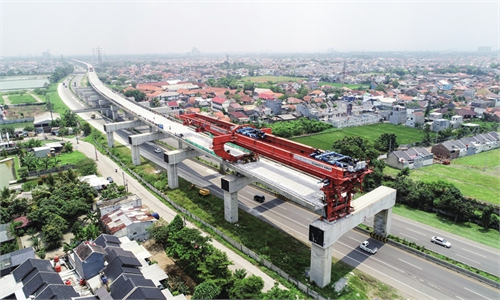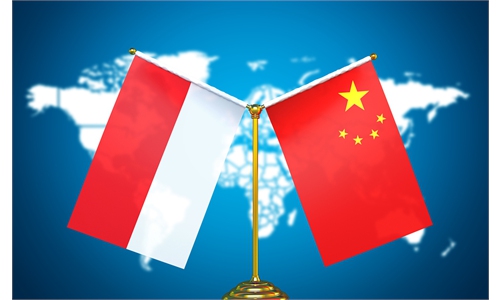Exclusive: China-proposed BRI and Indonesia's GMF highly synergized, prompting more mutual and win-win exchanges: Indonesian Ambassador
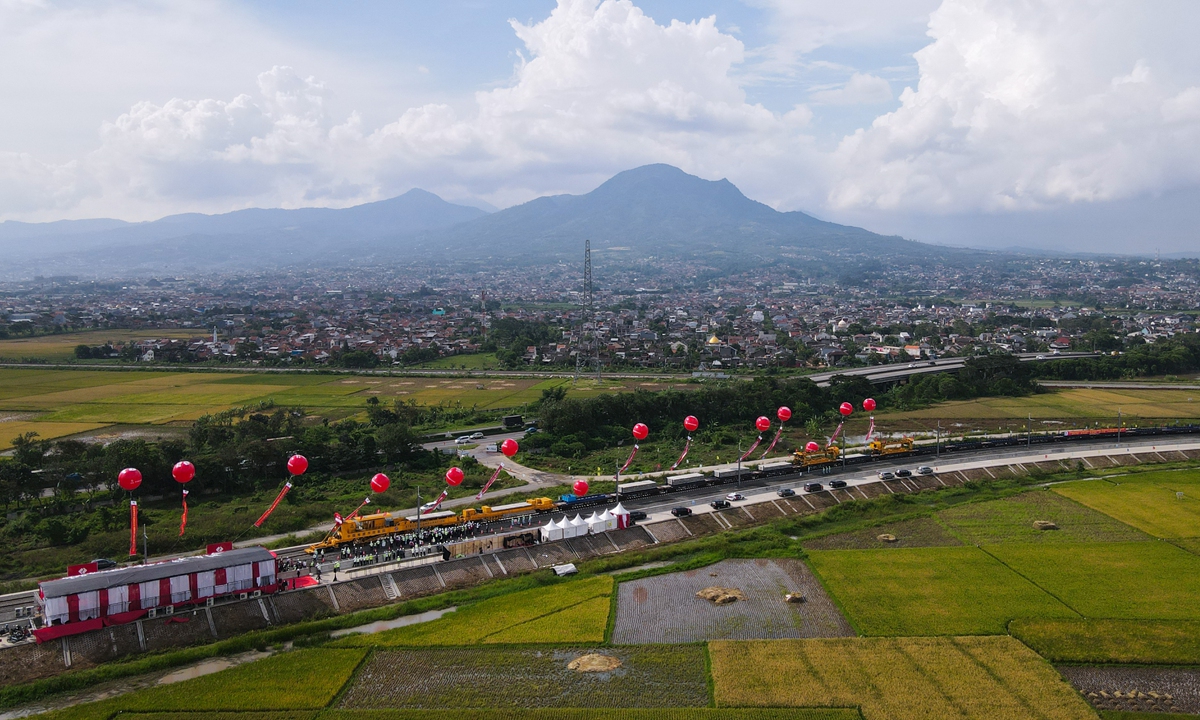
Photo taken on April 20, 2022 shows the track-laying construction site of Jakarta-Bandung High Speed Rail in Bandung, Indonesia. Photo: Xinhua
Editor's Note:
While the global situation has been under the shadow of the pandemic and the geopolitical conflicts, current bilateral relations, trade and investment cooperation between China and Indonesia is bucking the trend, with China consolidating its position as Indonesia's largest trading partner for nine consecutive years, and bilateral trade volume in 2021 increasing by nearly 60 percent year-on-year. China's investment in various fields in Indonesia have seen a substantive growth. Major cooperation projects, including the Jakarta-Bandung High-Speed Railway Project, the "Two Countries Twin Parks" program and the Regional Comprehensive Economic Partnership (RCEP) are the reflections of the highly synergized connectivity between the China-proposed Belt and Road Initiative (BRI) and Indonesia's national strategy. These cooperation projects will produce win-win outcome in the economic recovery of the country and the wider region.
As Indonesian President Joko Widodo noted on Wednesday, while attending a recent video summit marking the 70th anniversary of the China Council for the Promotion of International Trade, Indonesia and China have a lot in common as trade cooperation has developed rapidly, and investment in various sectors, particularly in mining and metallurgy, electricity and infrastructure, manufacture, agriculture, and fishery, reflect common interests.
Global Times (GT) reporter Yin Yeping recently conducted an exclusive interview with Djauhari Oratmangun (Oratmangun), the Indonesian Ambassador to China, to discuss the fruitful results of the cooperation between the two countries, the tenacity of the bilateral relationship, and the positive outlook for future ties. The ambassador also responded to the recent US-ASEAN special summit, where ASEAN centrality is embedded, and he hopes such centrality can play a pertinent role in bridging China-US relations.
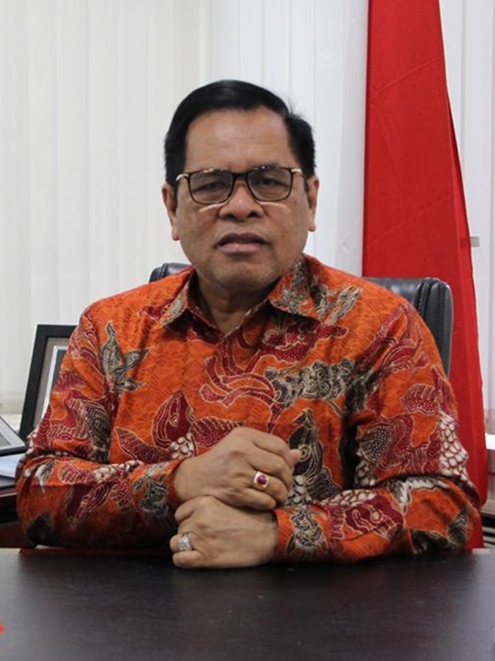
Djauhari Oratmangun, Indonesian Ambassador to China Photo: embassy
GT: How do you evaluate economic and trade cooperation between China and ASEAN, especially Indonesia, over the recent years? What achievements have the two countries made in bilateral economic and trade?
Oratmangun: Indonesia-China relations have shown a satisfying enhancement, especially after both agreed to form a comprehensive strategic partnership in 2013 and succeeded in synergizing Indonesia's Global Maritime Fulcrum (GMF) and the BRI in 2018. The mature relations are reflected in numbers as follows:
- In the investment sector, in 2021, China's investment in Indonesia reached $3.2 billion. With this figure, China became the 3rd largest investor in Indonesia. Meanwhile, China's Hong Kong Special Administrative Region (SAR) became the second largest investor with a total realized investment of $4.6 billion.
- According to data from the General Administration of Customs of China (GACC), the total trade between Indonesia and China in 2021 reached $124.3 billion, increasing 58.4 percent year-on-year.
- In the first quarter of 2022, China's total investment reached $1.4 billion, increasing 40 percent year-on-year. Chinese mainland is the third-largest investor in Indonesia after Singapore and China's Hong Kong SAR.
- Meanwhile, according to GACC's data, the total value of two-way trade reached $32.76 billion, increasing 31.14 percent year-on-year.
GT: The RCEP agreement was initiated by Indonesia when it took over the ASEAN presidency in 2011, and Indonesia is also one of the signatories of the RCEP. How do you judge the outcomes that the RCEP has created for bilateral economic and trade ties after the agreement has entered force?
Oratmangun: The entry into force of the RCEP agreement reflects the region's determination to keep its markets open, free, fair and inclusive, while also indicates that the rules-based multilateral trading system will ultimately contribute to the joint efforts of the global post-pandemic recovery. RCEP furthermore strengthens regional economic integration.
These new market access commitments and streamlined, modern rules and disciplines facilitate trade and investment.
I believe the RCEP will create new business opportunities, strengthen supply chains in the region, and encourage SMEs' participation in regional value chains and production hubs.
GT: What projects have China and Indonesia carried out under the Belt and Road framework? What achievements have been made that have impressed you the most?
Oratmangun: In 2018, Indonesia and China agreed to synergize the GMF and the BRI through the signing of a Memorandum of Understanding on Jointly Promoting Cooperation within the framework of the Global Maritime Fulcrum Vision and the Silk Road Economic Belt and the 21st Century Maritime Silk Road.
Under this synergy, the two countries agreed to develop four economic corridors in Indonesia:
North Sumatra is being developed as an "Economic and Business Hub for ASEAN," North Kalimantan as "Energy and Mineral Hub," Bali as "Hightech and Creative Economy Hub" and North Sulawesi as "Pacific Rim Economic Hub."
The area of cooperation includes the development of a technopark, industrial park, waste treatment project, power plant, e-commerce, transportation, port, special economic zone, 5G, sister-port, fisheries industry, green economy, blue economy, and energy.
The synergy has resulted in many essential projects, some of which have become Indonesia's national priority projects, including the Jakarta-Bandung High-Speed Railway Project, the Development of "Two Countries Twin Parks," the development of Tsinghua Southeast Asia Center on Kura Kura Island in Bali and the North Kalimantan Green Industrial Park.
GT: How does the China-proposed BRI synchronize with Indonesia's national development strategy?
Oratmangun: As I mentioned before, both countries have successfully synergized two connectivity concepts between Indonesia's GMF and China's BRI. The collaboration has turned into many national priority projects, which have encouraged more prominent and more mutual and win-win exchanges.
With its abundant resources and potential, Indonesia is perfectly matched with China's cutting-edge technologies and financing. With this understanding, Indonesia is open to China's investment to tackle today's global trends and issues, such as health, digital, and energy transition issues. The collaboration with China is also essential to boost our government's efforts to strengthen Indonesia's downstream industries, leading to value-added export commodities and making Indonesia the center of the global value chain in many products such as lithium batteries and vaccines.
GT: Chinese State Councilor and Foreign Minister Wang Yi recently met with Indonesia's Coordinator for Cooperation with China and Coordinating Minister Luhut Binsar Pandjaitan via video link, during which the China-Indonesia "Two Countries Twin Parks" was mentioned as concrete action for connecting China-proposed BRI and Indonesia's Global Ocean Fulcrum. Could you please share with us the latest and specific progress of the parks? How has the project benefited local people and the bilateral cooperation?
Oratmangun: "Two Countries Twin Parks" is developed with the spirit of intensifying friendly ties under the synergy of GMF and BRI and has been one of the most outstanding projects and a concrete manifestation of the synergy. The parks are now being developed by Fujian provincial government [in East China] and involve a number of industrial estates, such as the Yuanhong Investment Zone from the Chinese side and a number of Indonesian industrial zones, namely Bintan, Aviarna, and Batang.
Both countries agreed to accelerate the implementation of the parks as they will serve as a platform to strengthen trade and investment cooperation significantly. The parks will assist in linking business actors from both sides and make them actively.
Both countries agreed to accelerate the implementation of the parks as they will serve as platform to significantly strengthen trade and investment cooperation. The parks will assist to link business actors from both sides and make them actively engage in economic and business exchanges.
GT: Could you comment on the recent US-ASEAN special summit held in Washington? Do you think US' political actions may interfere with China-Indonesian bilateral relations and cooperation when it comes to the economy, trade, and projects under the BRI?
Oratmangun: Indonesia-US relationship within the framework of ASEAN is consistent with our independent and active foreign policy. This policy is formulated to guide us in engaging with all countries peacefully while implementing an inclusive, equitable, and peaceful approach. By engaging with ASEAN dialogue partners, we also take into account our respective relationships with other dialogue partners.
GT: When the US-ASEAN Special Summit was recently held in Washington, US President Joe Biden hailed it as a "new era" in the US-ASEAN ties, as the summit closed with a flurry of wide-ranging pledges. As the ASEAN-US relations enter a "new era," what impact could it have on China-ASEAN relations in your view?
Oratmangun: ASEAN centrality is embedded also in the heart of our relationships with all ASEAN dialogue partners and also can play a pertinent role, including the US. As we welcome the dawn of a new era in regards to ASEAN-US relations as well as the ASEAN-China Comprehensive Strategic Partnership, ASEAN centrality can play a pertinent role in bridging China-US relations.
